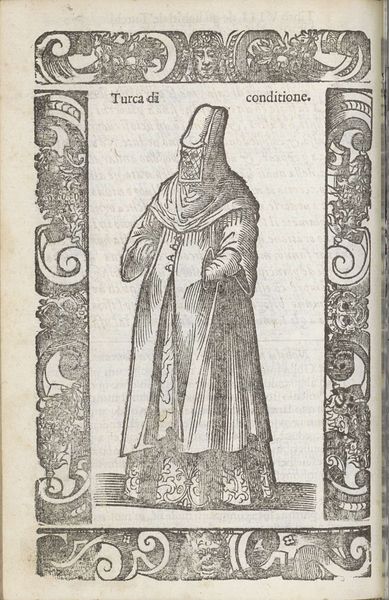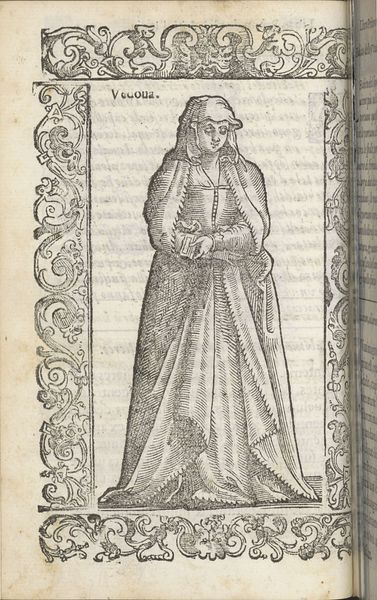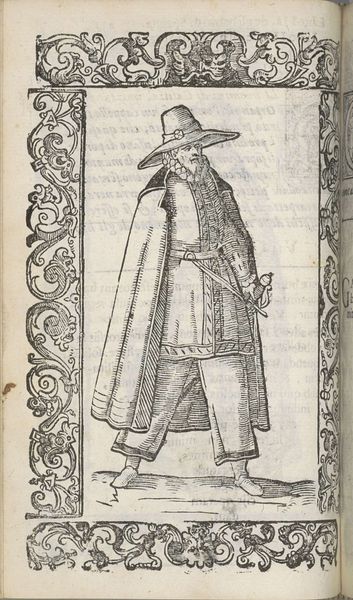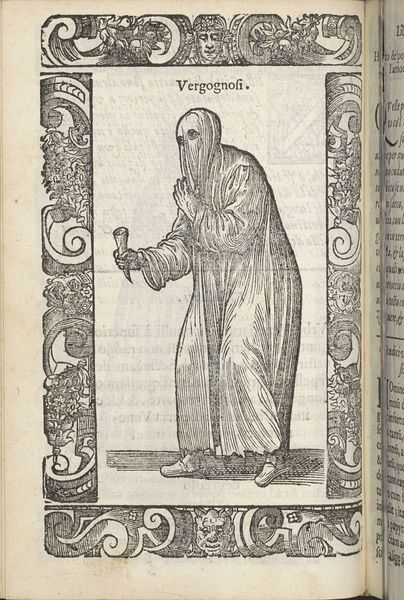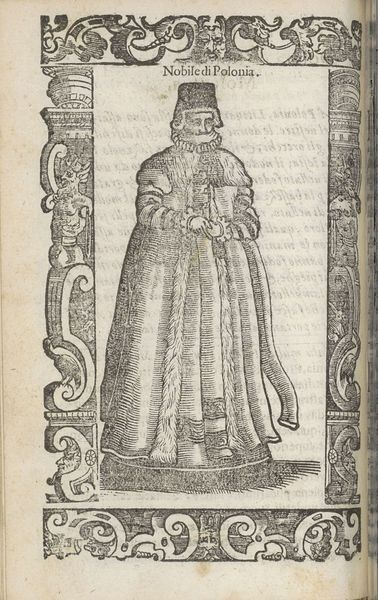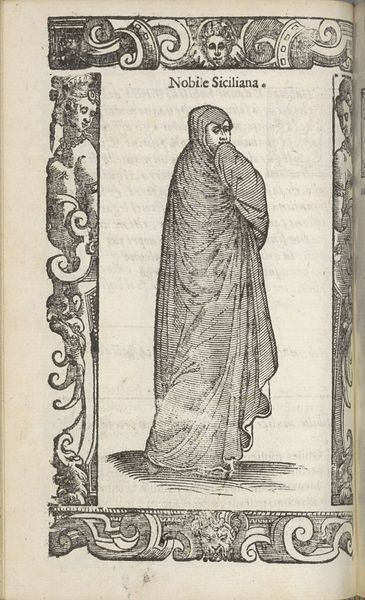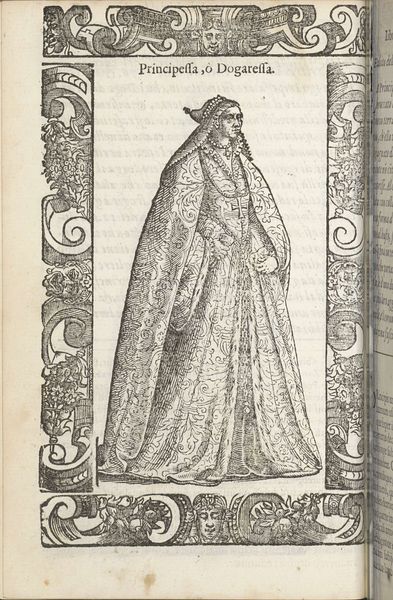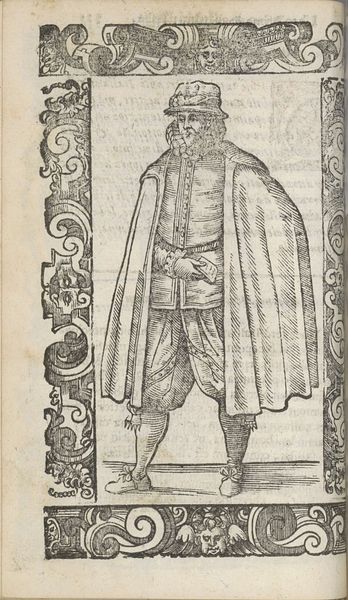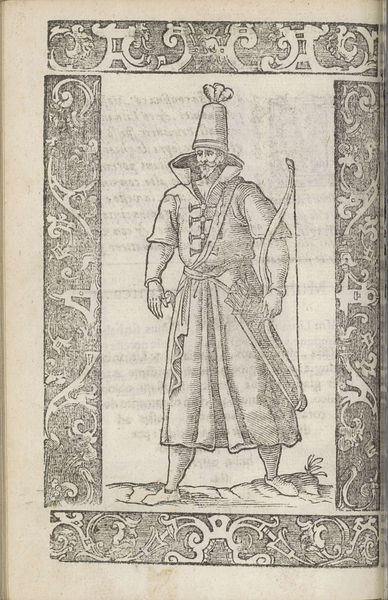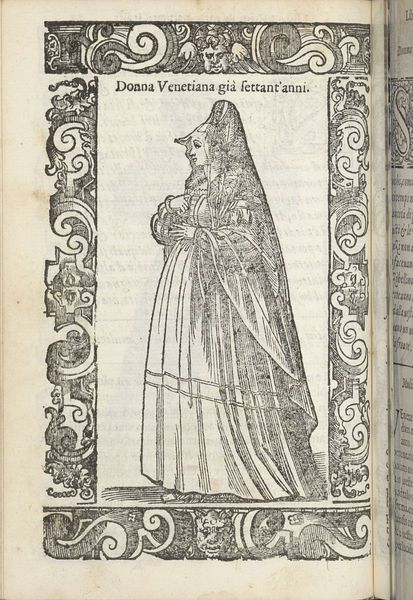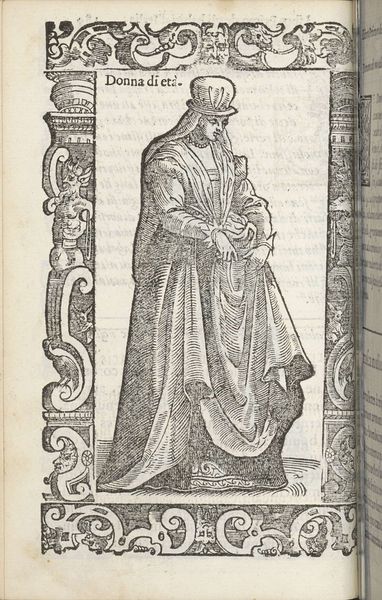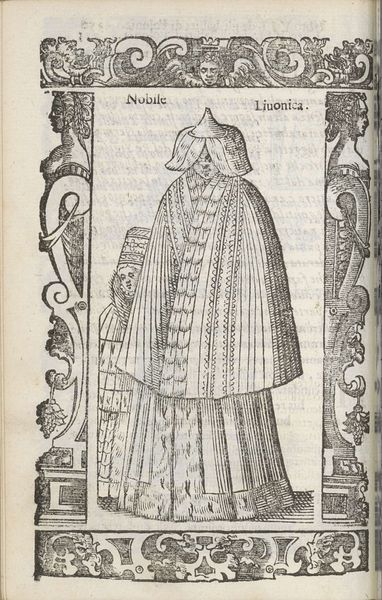
print, engraving
#
aged paper
# print
#
pen sketch
#
sketch book
#
figuration
#
personal sketchbook
#
sketchwork
#
pen-ink sketch
#
pen work
#
sketchbook drawing
#
history-painting
#
storyboard and sketchbook work
#
italian-renaissance
#
sketchbook art
#
engraving
Dimensions: height 167 mm, width 125 mm
Copyright: Rijks Museum: Open Domain
Curator: Here we have a print titled "Compagni di Calza" which roughly translates to “Companions of the Stocking” created in 1598 by Christoph Krieger. What's your initial reaction? Editor: It strikes me as quite ornate for such a seemingly simple figure. There's a stillness, an almost reverential quality, despite being a relatively small engraving. Curator: Krieger really excelled at textures here. Note the meticulous cross-hatching creating volume in the robe’s folds and the decorative patterns on the mantle, the fine, controlled lines define its weight and how it drapes. Editor: Absolutely. That robe and mantle – clothing acts as powerful symbolism in Renaissance art. The garment suggests status, wealth and maybe even membership in a particular guild or fraternity—hence the title. Are these sartorial clues, a kind of visual language about the man’s identity? Curator: The rendering gives the central figure substance but the lack of facial features turns the focus onto surface treatment—texture and detail—in dialogue with the Renaissance penchant for elaborate decoration. What could a missing face signify? Editor: The facelessness may suggest humility, or the idea of "Everyman", perhaps an artistic commentary about brotherhood that transcends individual identity. Moreover, the decorative frame reminds me of illuminated manuscripts; is it a reminder of artistic and cultural lineage? Curator: I see your point about lineage. Krieger’s technique here is impressive; the delicate balance of positive and negative space gives clarity to form but at the same time generates visual intricacy, echoing printmaking traditions from the North. Editor: For me, this piece transcends being a mere display of technical skill. The symbolic elements woven into his clothes are visual storytelling. It reveals a snapshot into societal values of that time. It's less about this individual and more about what he *represents*. Curator: Yes, it appears that Krieger embedded both technical achievement and encoded references into one image, making it appealing at both aesthetic and intellectual levels. It offers layers of meaning that extend beyond the immediate impression. Editor: Ultimately, an enigmatic figure portrayed with the technical precision of printmaking allows viewers a continued exploration of details. Its symbols of Renaissance visual communication create historical continuity within a relatively small space.
Comments
No comments
Be the first to comment and join the conversation on the ultimate creative platform.
